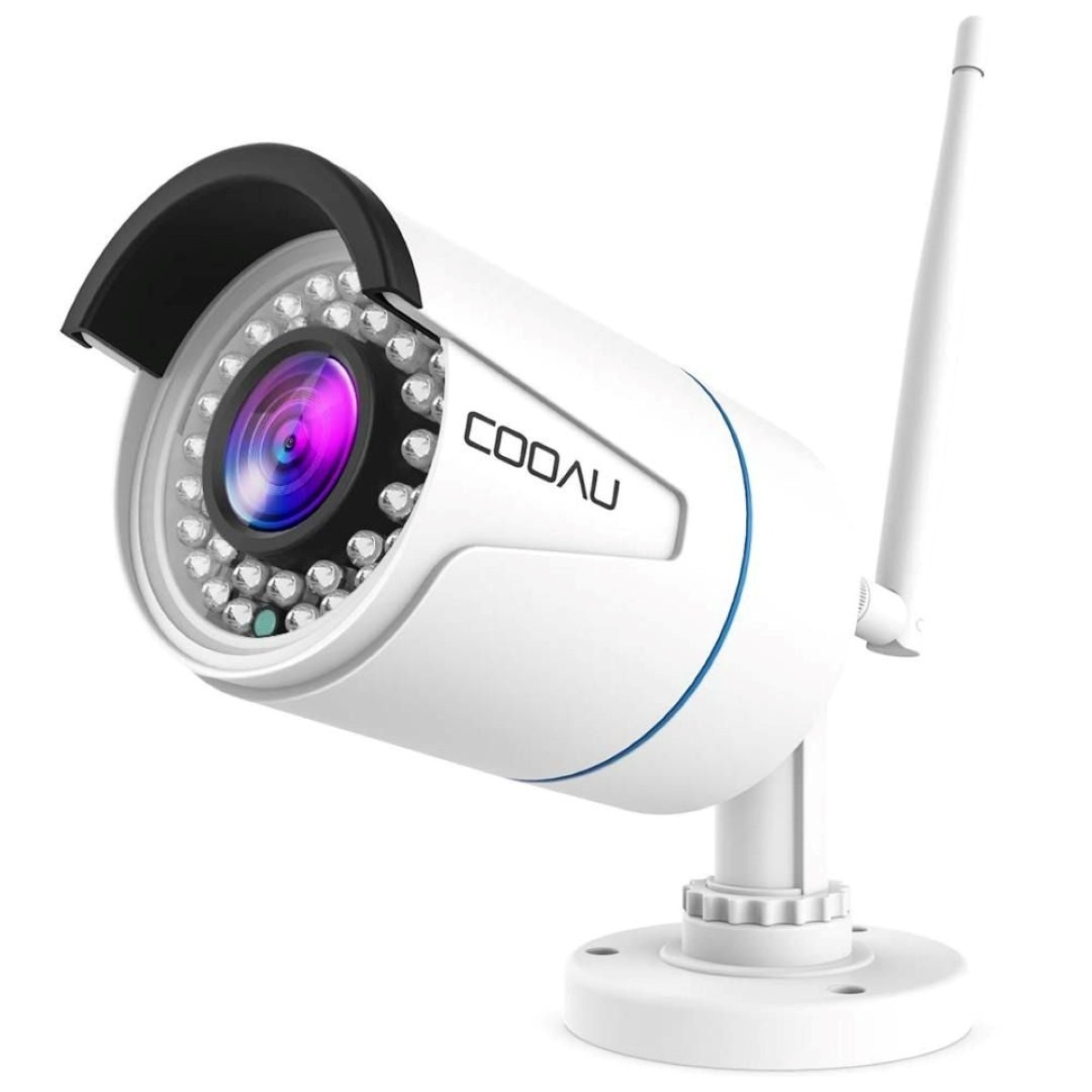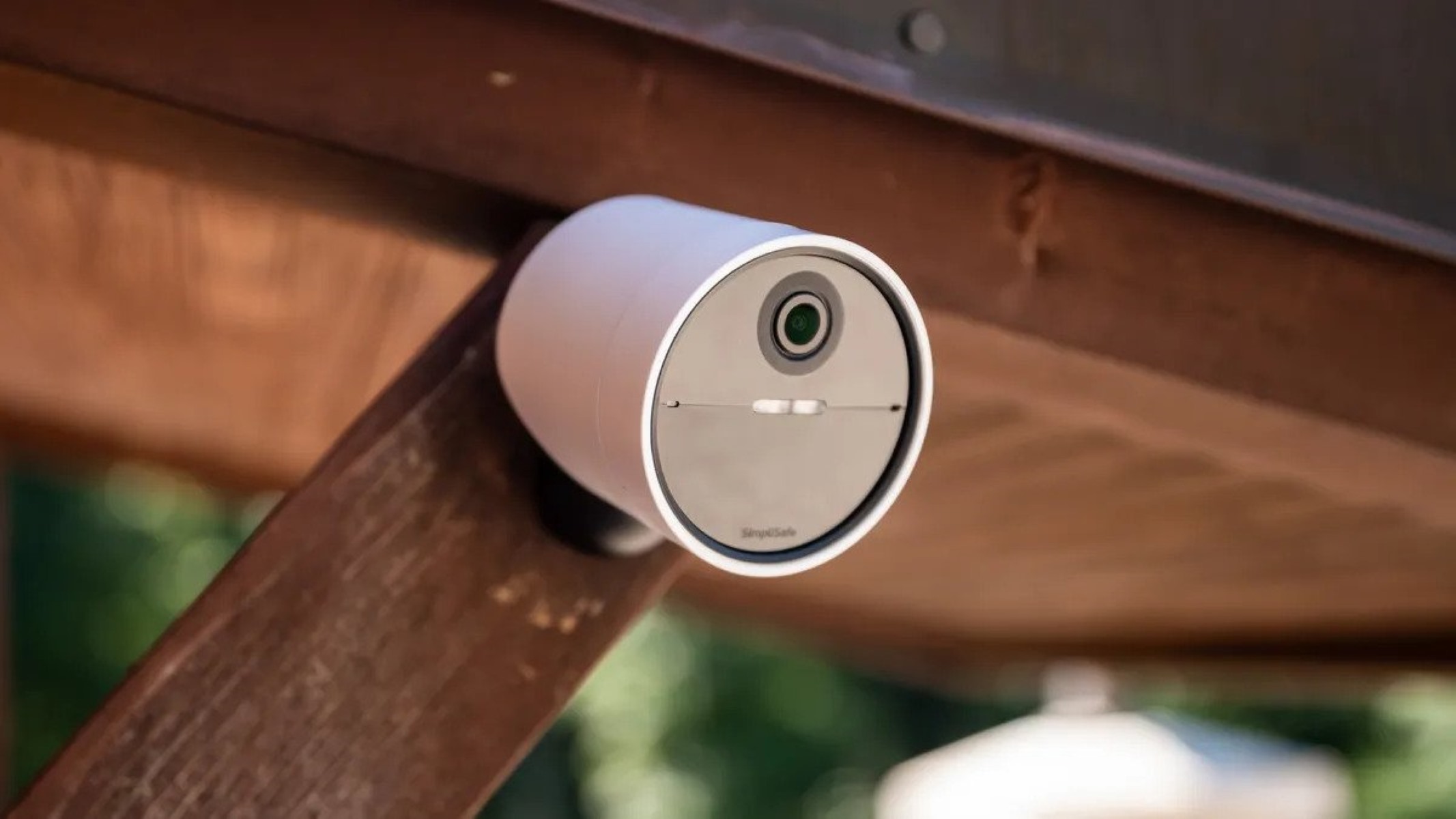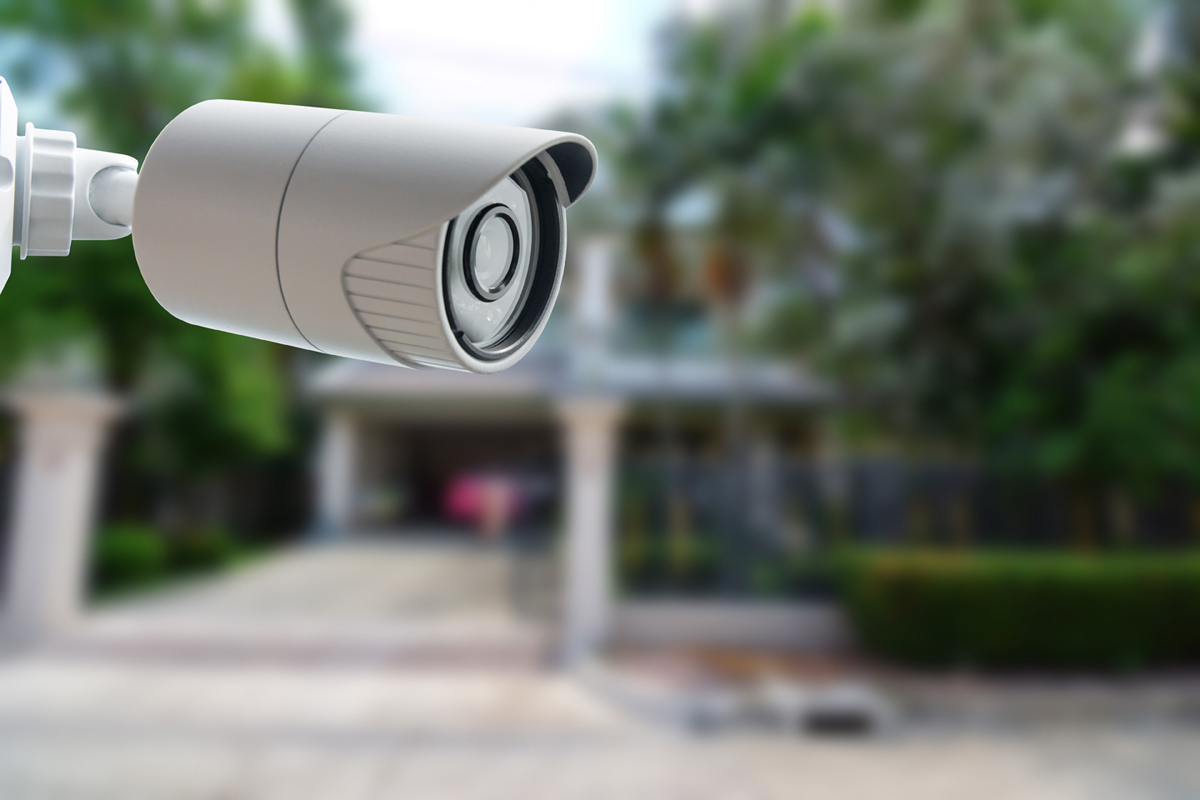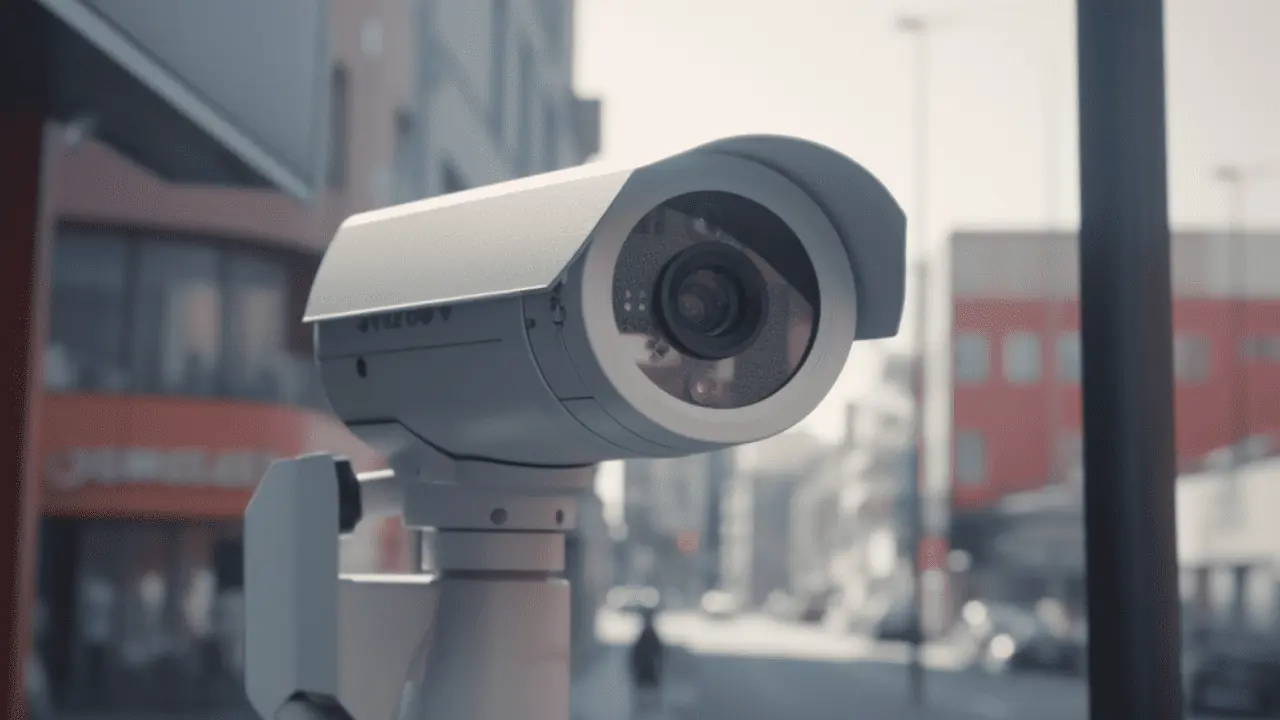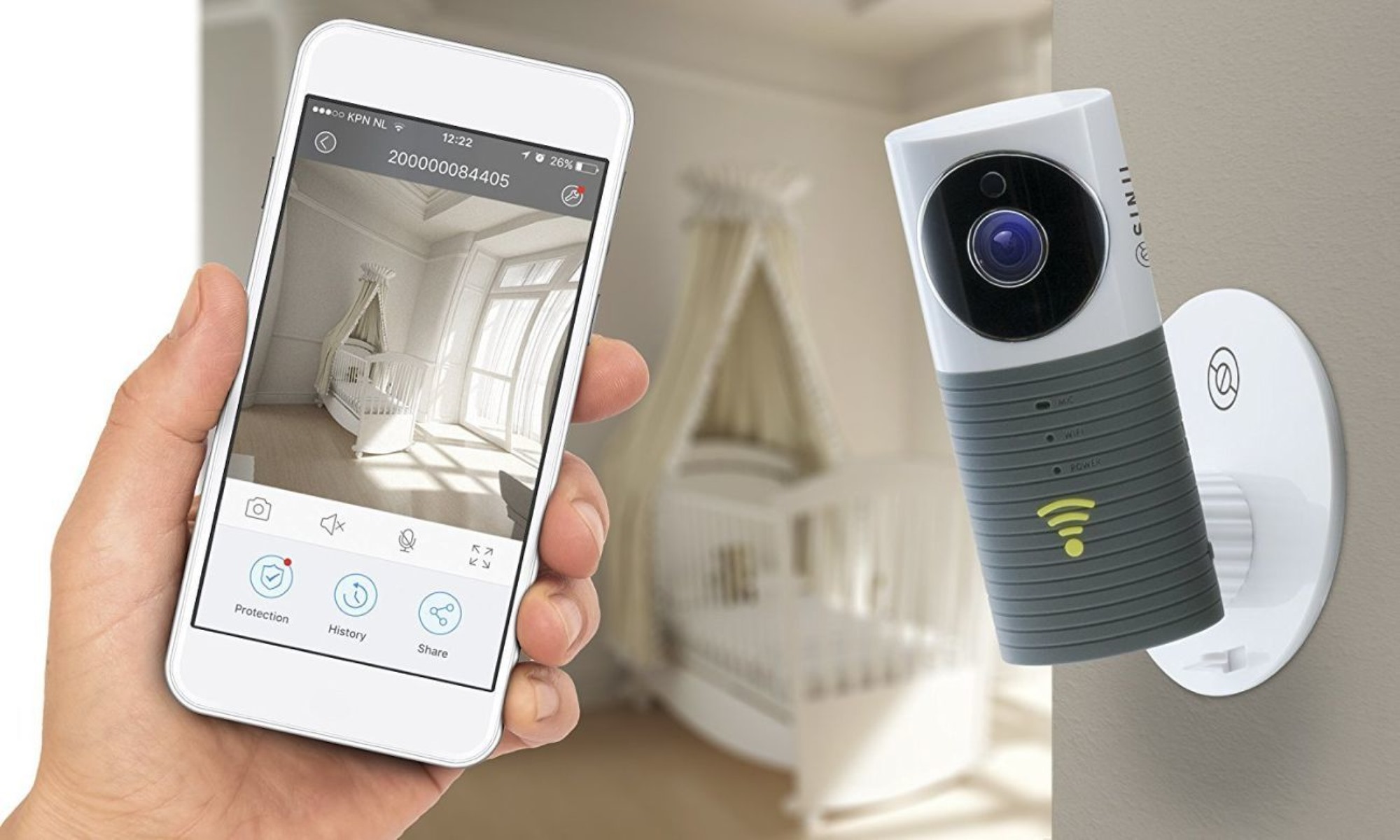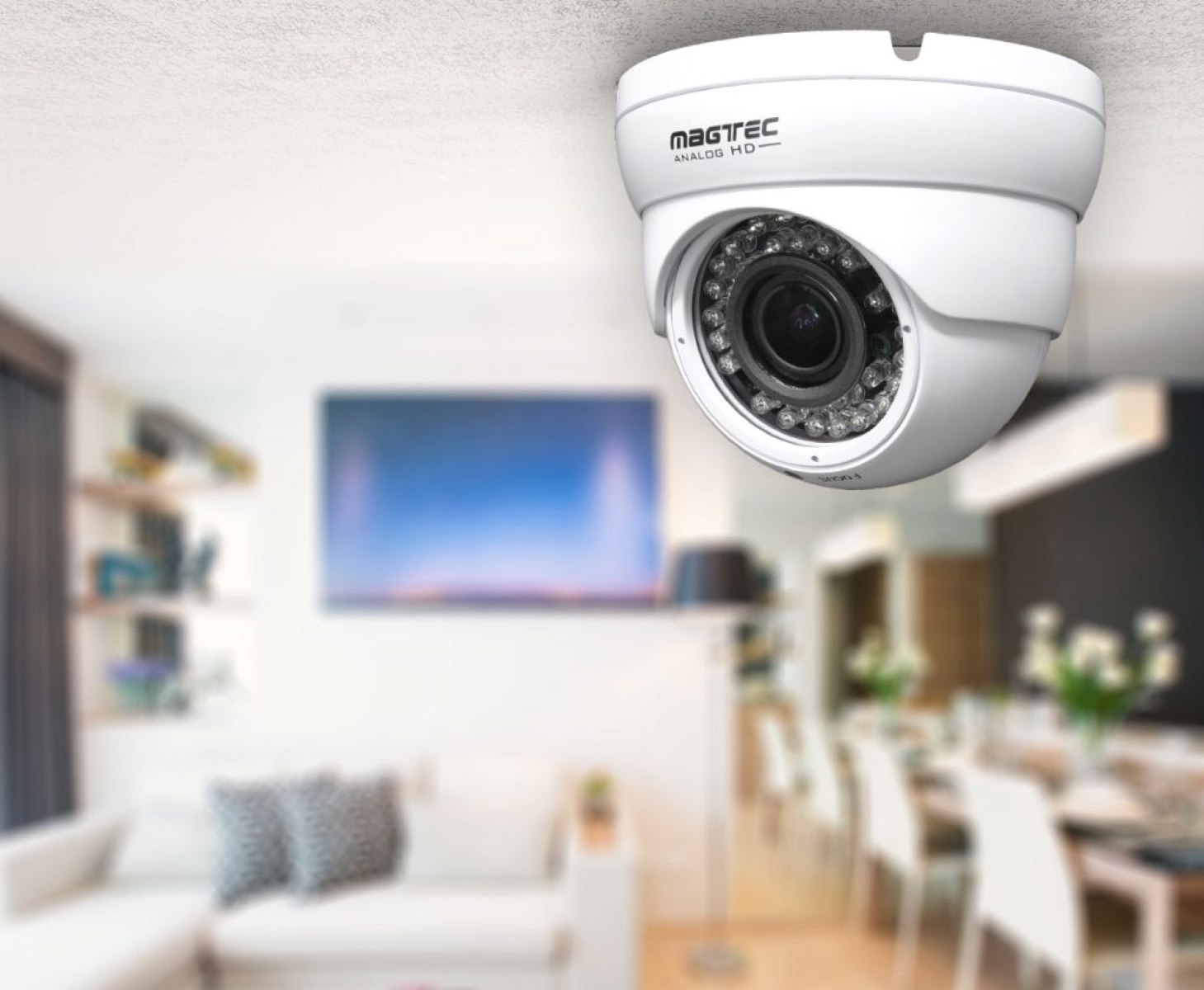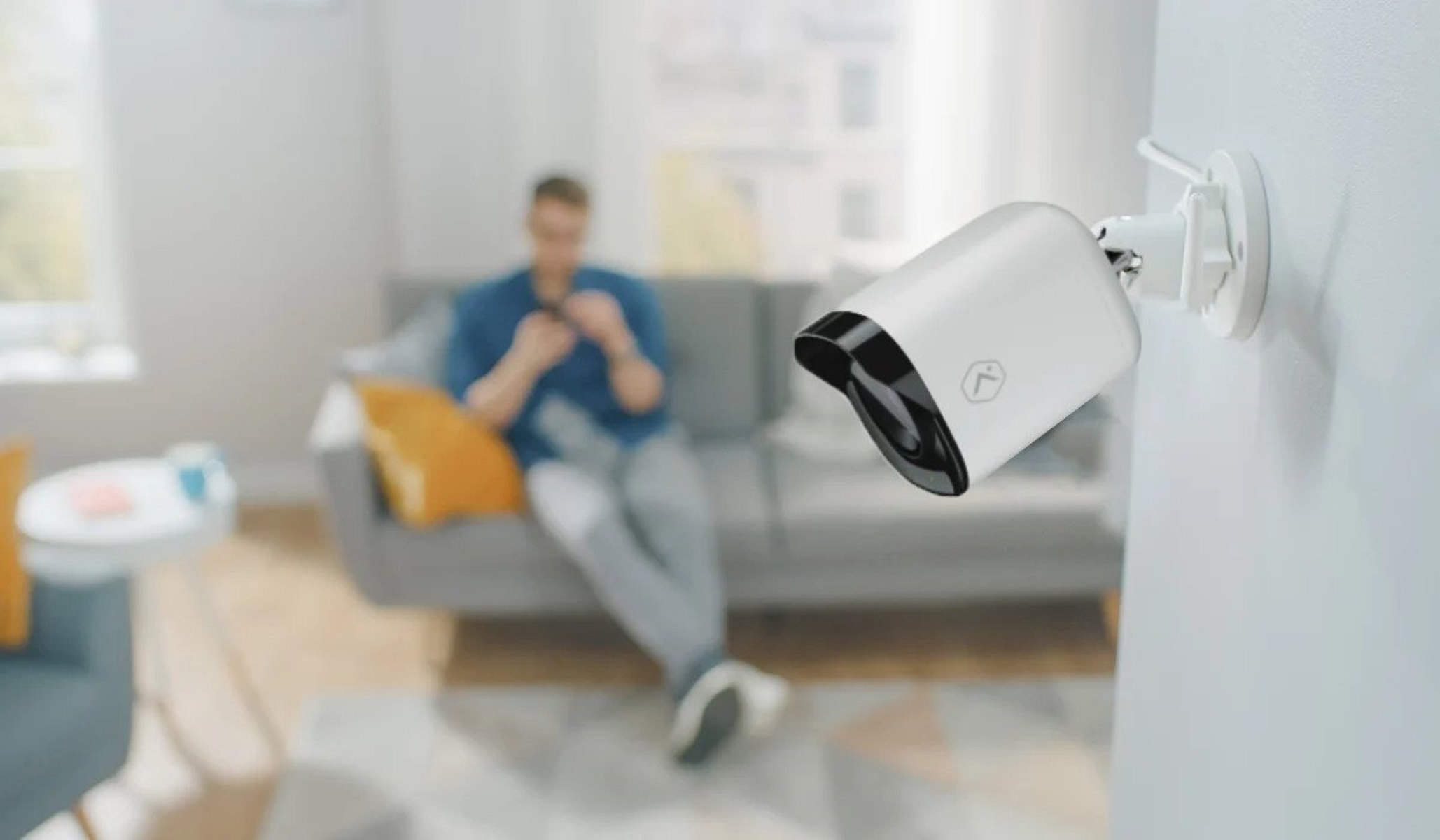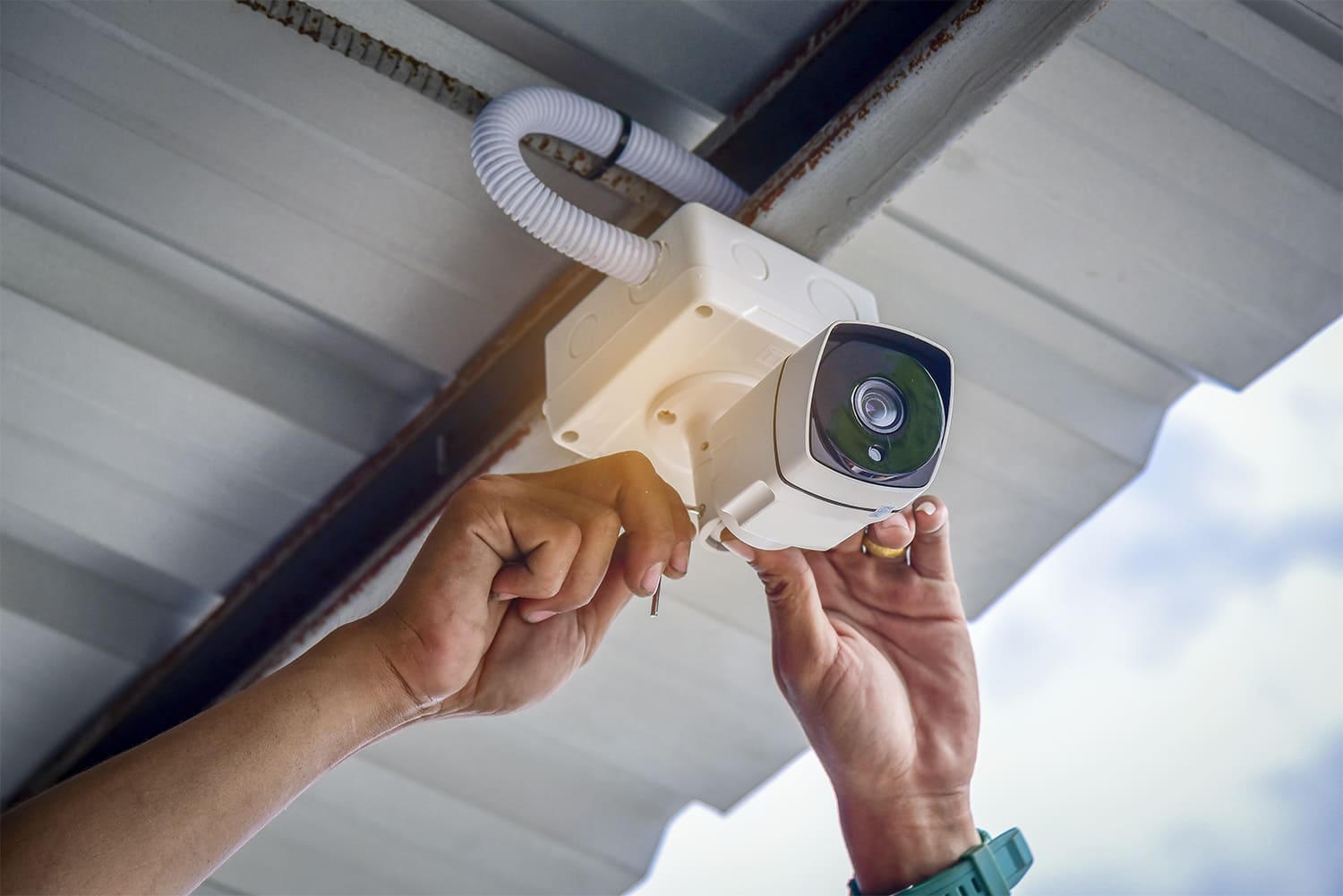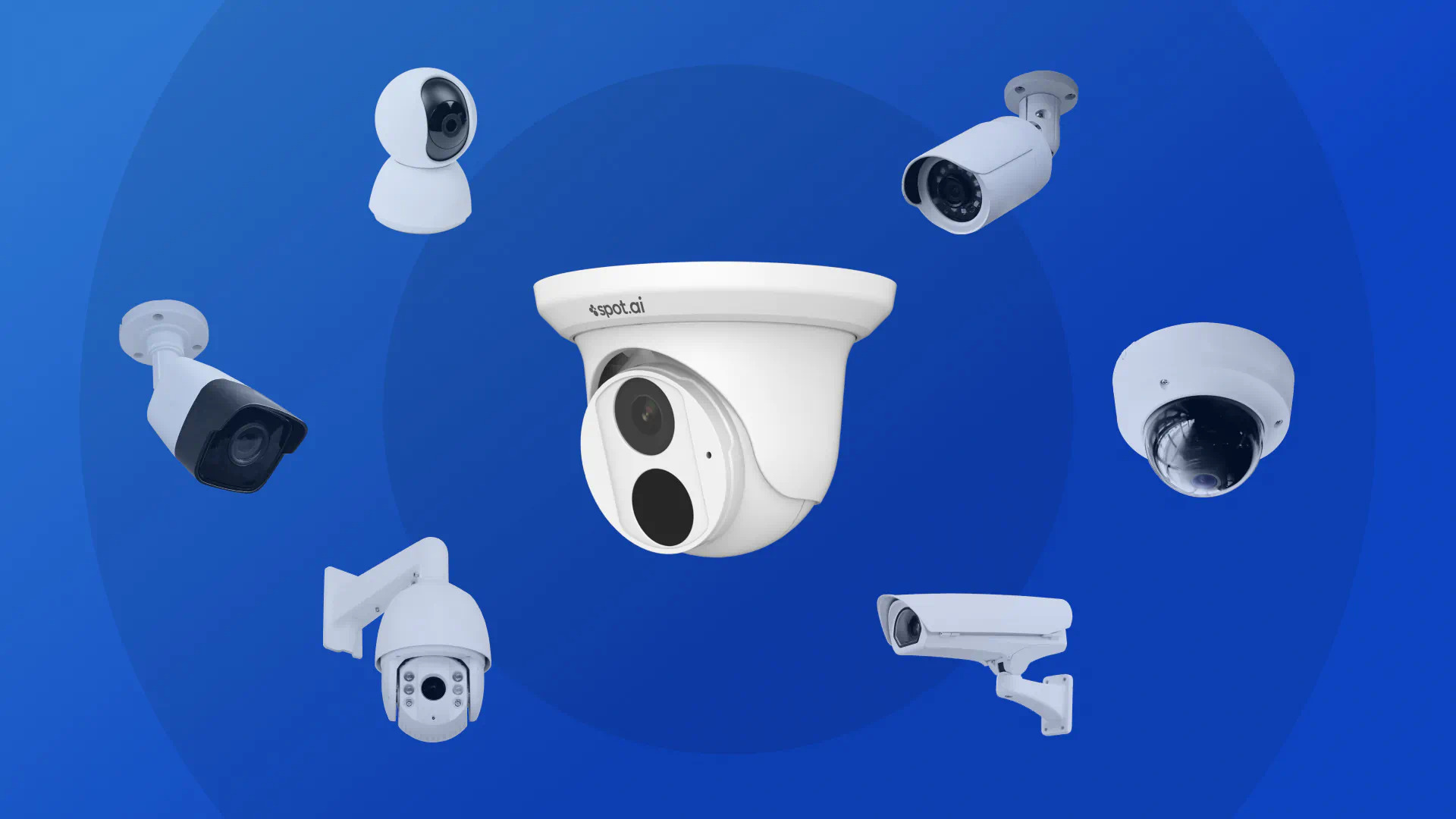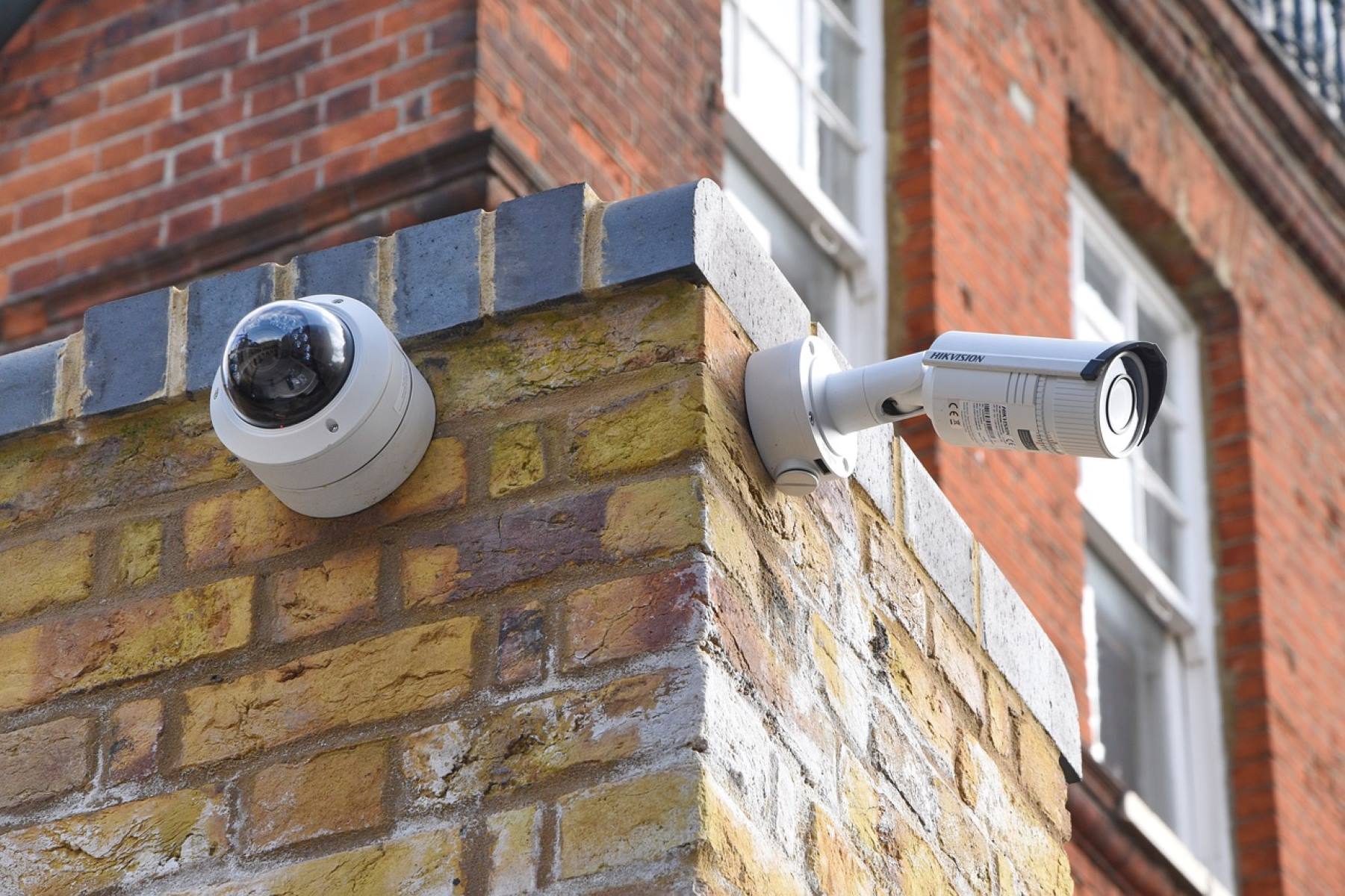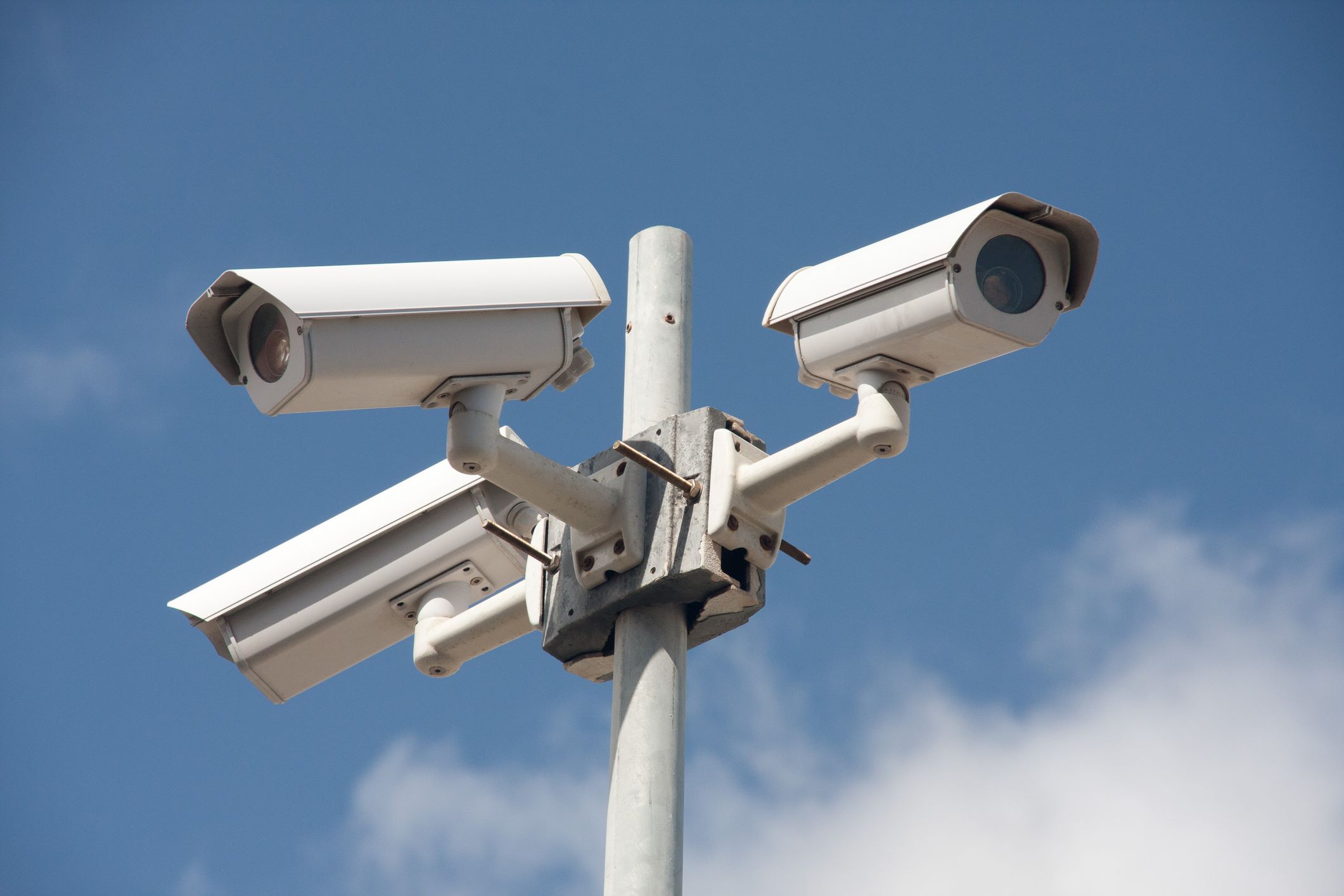Home>Home Security and Surveillance>How To Choose The Best Home CCTV System
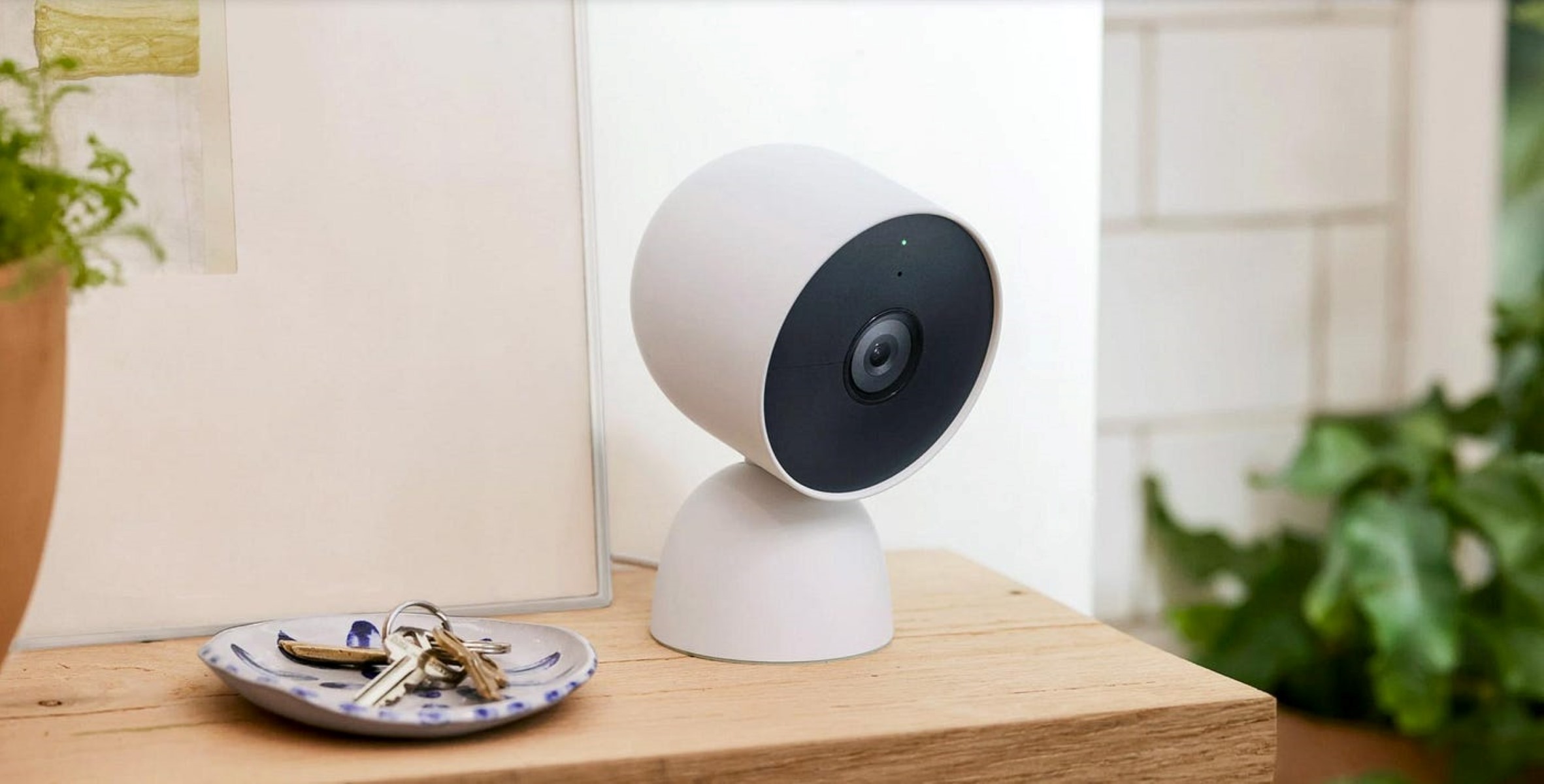

Home Security and Surveillance
How To Choose The Best Home CCTV System
Modified: March 6, 2024
Discover the top tips for selecting the perfect home CCTV system to enhance your home security and surveillance. Make informed choices with our expert advice.
(Many of the links in this article redirect to a specific reviewed product. Your purchase of these products through affiliate links helps to generate commission for Storables.com, at no extra cost. Learn more)
Introduction
Welcome to the world of home security and surveillance! In today’s fast-paced and interconnected world, protecting our homes and loved ones has become a top priority. One of the most effective ways to ensure the safety and security of your home is by installing a CCTV (Closed Circuit Television) system.
A home CCTV system is essentially a network of cameras and recording devices that monitor and capture video footage of your property. These systems have evolved significantly over the years, offering a wide range of features and options to suit various needs and budgets.
Choosing the best home CCTV system can seem like a daunting task, given the multitude of choices available in the market. This comprehensive guide aims to simplify the process by highlighting the key factors you should consider before making a decision.
Whether you are a homeowner looking to enhance your home security or a renter wanting to add an extra layer of protection, this article will provide you with the necessary information to make an informed choice.
In the following sections, we will discuss the different types of home CCTV systems, camera resolution and image quality, field of view, night vision capability, wired vs wireless systems, storage options, remote viewing and mobile access, alarm and notification features, integration with other home security devices, cost and budget considerations, as well as installation and maintenance.
By the end of this article, you will be equipped with the knowledge to select the best home CCTV system that meets your specific requirements and provides you with peace of mind.
Key Takeaways:
- Choosing the best home CCTV system involves considering factors like security needs, camera quality, night vision, and budget. It’s important to find a balance between affordability and effective security features.
- Installation and maintenance are crucial for maximizing the performance and longevity of your CCTV system. Proper positioning, regular inspections, and software updates ensure reliable security for your home.
Read more: Which CCTV Is Best For Home?
Factors to Consider Before Choosing a Home CCTV System
Before diving into the world of home CCTV systems, it is important to consider a few key factors that will help you make the right choice for your home security needs. Let’s explore these factors in detail:
- Security Needs: Assess your specific security needs and objectives. Do you want basic surveillance to monitor the perimeter of your property, or do you need more advanced features such as facial recognition or license plate recognition?
- Location: Identify the key areas of your property that require surveillance. Determine the number of cameras needed and their optimal placement to maximize coverage.
- Budget: Determine your budget for purchasing and installing a home CCTV system. Remember to consider both the upfront costs and any ongoing monthly fees for remote monitoring or cloud storage.
- Camera Quality and Resolution: Look for cameras with high-resolution capabilities, such as 1080p or higher, to ensure clear and detailed video footage.
- Field of View: Consider the field of view provided by the cameras. Opt for wide-angle lenses or cameras with pan-tilt-zoom (PTZ) capabilities to cover larger areas.
- Night Vision: Choose cameras with infrared (IR) capabilities for clear monitoring in low-light or nighttime conditions.
- Wired vs Wireless: Decide whether a wired or wireless system is more suitable for your needs. Wired systems offer a more stable connection, while wireless systems provide greater flexibility in terms of camera placement.
- Storage Options: Consider the storage options available for storing and accessing recorded footage. Options include local storage with DVR/NVR systems or cloud-based storage.
- Remote Viewing: Look for systems that allow remote access to live video feeds and recorded footage through mobile apps or web browsers. This feature enables you to monitor your property from anywhere, anytime.
- Alarm and Notification Features: Check if the system offers motion detection, intrusion alerts, and the ability to send notifications to your smartphone or email when suspicious activity is detected.
- Integration with Other Devices: Consider whether the system can be integrated with other home security devices, such as door/window sensors or smart locks. This integration allows for a more comprehensive and interconnected security system.
- Installation and Maintenance: Evaluate the complexity of the installation process and ongoing maintenance requirements. Some systems may require professional installation, while others can be easily set up by homeowners.
By carefully considering these factors, you can narrow down your options and choose the home CCTV system that best meets your security needs, budget, and lifestyle. Remember, investing in a reliable and effective CCTV system is an investment in the safety of your home and loved ones.
Types of Home CCTV Systems
When it comes to home CCTV systems, there are several types available on the market. Each type offers unique features and advantages. Let’s explore the most common types:
- Analog CCTV Systems: These are traditional systems that use analog cameras and require a wired connection to a DVR (Digital Video Recorder) for video recording and storage. Analog systems are cost-effective and suitable for basic surveillance purposes.
- HD-TVI Systems: HD-TVI (High Definition Transport Video Interface) systems offer high-definition video quality with a resolution of up to 1080p. These systems are compatible with both analog and high-definition cameras, making them a flexible option for upgrading existing systems.
- IP Systems: IP (Internet Protocol) systems use network cameras that connect directly to your home network, eliminating the need for a separate DVR. These cameras transmit and record video footage over the internet, offering high-resolution images and advanced features.
- Wireless Systems: Wireless CCTV systems use Wi-Fi or other wireless technologies to transmit video signals from the cameras to a receiver or NVR (Network Video Recorder). These systems offer easy installation and flexibility in camera placement.
- DIY Systems: DIY (Do-It-Yourself) systems are designed for easy self-installation. These plug-and-play systems typically include wireless cameras, a recorder, and mobile app access for remote viewing.
- Cloud-Based Systems: Cloud-based CCTV systems store video footage in the cloud instead of a local device. This allows for easy access and storage management from anywhere, as well as additional backup and redundancy.
- Wire-free Systems: Wire-free systems use battery-powered cameras that communicate wirelessly with a receiver or base station. These systems are highly flexible and can be installed in areas where running wires is not feasible.
- Smart Home Integrated Systems: These systems are designed to integrate with existing smart home devices and platforms, allowing for seamless control and monitoring of your CCTV system through voice commands or a centralized smart home hub.
Each type of home CCTV system has its own strengths and considerations. It’s important to assess your specific needs, budget, and technical requirements to determine which type of system is the best fit for your home security setup.
Now that we have explored the types of home CCTV systems available, let’s delve into other important factors to consider when choosing a system, such as camera resolution, field of view, and storage options.
Camera Resolution and Image Quality
When it comes to home CCTV systems, camera resolution and image quality are crucial factors to consider. The resolution of a camera determines the level of detail and clarity in the captured footage. Let’s delve deeper into these aspects:
Resolution: Camera resolution is typically measured in pixels. The higher the resolution, the more detailed the image. Common resolutions for home CCTV systems include:
- Standard Definition (SD): SD cameras usually have a resolution of 480p, which provides decent image quality but lacks fine detail.
- High Definition (HD): HD cameras have a resolution of 720p or 1080p. These offer significantly better image quality and detail compared to SD cameras.
- Ultra High Definition (UHD) or 4K: UHD cameras have a resolution of 2160p or higher. These cameras deliver incredibly detailed and sharp images, making them ideal for larger areas or situations where fine details need to be captured.
Image Quality: Apart from resolution, image quality is influenced by factors such as sensor size, lens quality, and image processing capabilities. Look for cameras with features like wide dynamic range (WDR) and digital noise reduction (DNR), as these enhance image quality in challenging lighting conditions or low light environments.
Keep in mind that higher resolution cameras require more storage space for video footage and may consume additional bandwidth for remote viewing. Therefore, consider the trade-off between image quality and your storage and bandwidth requirements.
Another consideration is the type of camera sensor used. CMOS (Complementary Metal-Oxide-Semiconductor) sensors are more common in consumer-grade CCTV systems due to their lower cost, while CCD (Charge-Coupled Device) sensors are known for better image quality in low-light conditions. However, technology advancements have made CMOS sensors capable of producing excellent image quality even in challenging lighting situations.
Ultimately, the camera resolution and image quality you choose will depend on factors such as your surveillance needs, the size of the area being monitored, and your budget. It’s recommended to opt for the highest resolution and image quality that fits within your requirements and budget to ensure that you capture clear and detailed footage for effective home security.
Now that we have covered camera resolution and image quality, let’s move on to discussing the field of view and its importance when choosing a home CCTV system.
Field of View
When selecting a home CCTV system, considering the field of view (FOV) is essential. The field of view refers to the area captured by the camera and is determined by the lens focal length and sensor size. Let’s explore the significance of field of view:
Lens Focal Length: The lens focal length determines the angle of view and the level of zoom. Cameras with shorter focal lengths have a wider field of view, capturing a larger area but with less zoom capability. Conversely, cameras with longer focal lengths have a narrower field of view but offer greater zoom capabilities for focusing on specific details.
Sensor Size: The sensor size affects the field of view and image quality. Larger sensors generally provide a wider field of view and better low-light capabilities. However, smaller sensors can still deliver excellent results when combined with advanced technologies and lens quality.
When choosing a home CCTV system, consider the area you want to cover and the level of detail you require. If you want to monitor a large area, such as a backyard or driveway, a camera with a wide-angle lens and a wider field of view would be ideal. On the other hand, if you need to focus on specific entry points or areas of interest, a camera with a narrower field of view and higher zoom capabilities would be more suitable.
It’s important to strike a balance between the desired field of view and the level of detail required. In some cases, it might be necessary to use multiple cameras with different lens focal lengths to ensure comprehensive coverage of your property.
Additionally, consider features such as pan-tilt-zoom (PTZ) capabilities, which allow you to remotely control the camera’s movement and adjust the field of view as needed. PTZ cameras can be particularly useful for monitoring large areas or tracking specific objects or individuals.
Having a clear understanding of your specific surveillance requirements and considering the camera’s field of view will help you choose a home CCTV system that adequately captures the desired areas and provides the necessary level of detail for effective monitoring and security.
Next, let’s delve into the importance of night vision capability when selecting a home CCTV system.
Read more: How To Secure Home CCTV
Night Vision Capability
When it comes to home CCTV systems, night vision capability is a critical feature to consider. Night vision allows the cameras to capture clear and detailed footage even in low-light or nighttime conditions. Here’s why night vision capability is important:
24/7 Monitoring: Criminal activities often occur under cover of darkness. With night vision capability, your CCTV system can provide continuous monitoring and surveillance, ensuring that any suspicious activities are captured and recorded throughout the night.
Enhanced Security: By having cameras with night vision, you can effectively monitor key areas of your property, such as entry points, driveways, or dark corners, even when visibility is limited. This helps to deter potential intruders and provides a sense of security for you and your family.
Clear Visibility: Night vision technology utilizes infrared (IR) LEDs to illuminate the scene, allowing the cameras to capture clear and detailed images in the absence of natural light. The quality of night vision can vary, so consider cameras with sufficient IR range and high-performance sensors to ensure optimal visibility in low-light situations.
Various Night Vision Modes: Some CCTV systems offer different night vision modes, such as black and white or color night vision. Black and white night vision tends to provide better image quality in low-light conditions, while color night vision is beneficial for capturing more accurate details.
In addition to night vision capabilities, consider features such as adjustable IR sensitivity or the ability to remotely control the IR illumination level. These features allow you to customize the night vision settings based on your specific environment and requirements.
When evaluating night vision capabilities, it’s important to consider the range and coverage provided by the cameras. Some cameras have a shorter range, suitable for monitoring smaller areas, while others offer a longer range for larger properties. Be sure to choose cameras that provide sufficient night vision range for your specific needs.
Remember to test the night vision capability of the CCTV system before making a purchase. This will give you a better understanding of how well the cameras perform in low-light conditions and ensure that they meet your expectations for night-time surveillance.
Now that we have covered the importance of night vision, let’s move on to discussing the difference between wired and wireless home CCTV systems.
Wired vs Wireless Systems
When it comes to choosing a home CCTV system, one important consideration is whether to opt for a wired or wireless system. Both options have their pros and cons, so let’s explore the differences between the two:
Wired Systems:
Wired CCTV systems utilize physical cables to connect the cameras to a central recording device, such as a DVR (Digital Video Recorder) or NVR (Network Video Recorder). Here are some key points to consider:
- Reliability: Wired systems generally offer a more stable and reliable connection since they transmit data through physical cables. This ensures minimal interference and a consistent video feed.
- Higher Quality Video: Wired systems often provide higher quality video due to the dedicated and stable connection. This is especially important for capturing detailed footage and identifying individuals or objects in the footage.
- Secure Connection: Wired systems are less vulnerable to hacking or interference from external sources since they do not rely on wireless signals.
- Installation Complexity: Wired systems typically require professional installation, as they involve running cables through walls or ceilings. This can add to the upfront cost and installation time.
- Flexibility: While wired systems offer a reliable connection, they are less flexible in terms of camera placement. Cameras need to be located within the reach of the cables, which may limit placement options.
Wireless Systems:
Wireless CCTV systems, as the name suggests, use wireless technology to transmit video signals from the cameras to a receiver or NVR. Here are some key points to consider:
- Ease of Installation: Wireless systems are generally easier to install since there is no need for running cables. This makes them a popular choice for DIY installations.
- Camera Placement: Wireless systems offer more flexibility in camera placement since they are not limited by the reach of cables. This allows you to position cameras in areas that are difficult to reach with wired systems.
- Scalability: Wireless systems are easier to expand or modify as your surveillance needs change. You can simply add or move cameras without the need for additional wiring.
- Signal Interference: Wireless systems may experience signal interference from other devices or obstacles such as walls or wireless networks. This can impact the quality and stability of the video feed.
- Dependence on Wireless Signals: Wireless systems rely on a stable wireless connection. If the signal is weak or unstable, it may affect the performance and reliability of the system.
Choosing Between Wired and Wireless Systems:
The decision between a wired or wireless CCTV system ultimately depends on your specific needs and preferences. Wired systems are recommended for those who prioritize reliability, high-quality video, and a secure connection. On the other hand, wireless systems are better suited for users who value ease of installation, flexibility in camera placement, and scalability.
Consider factors such as the size of your property, the complexity of installation, your budget, and any potential signal interference when deciding between wired and wireless systems.
In the next section, we will discuss storage options for home CCTV systems and how they can impact your footage recording and retrieval.
When choosing a home CCTV system, consider the resolution, night vision capability, storage options, and remote viewing capabilities to ensure you get the best system for your needs.
Storage Options
When it comes to home CCTV systems, having reliable and efficient storage options is crucial for recording and storing video footage. Here are the main storage options to consider:
Local Storage with DVR/NVR: Many CCTV systems utilize a DVR (Digital Video Recorder) or NVR (Network Video Recorder) for local storage. These devices are connected to the cameras and record footage onto a hard disk drive (HDD) or solid-state drive (SSD). Local storage offers several advantages:
- Ample Storage Capacity: DVRs and NVRs typically offer a range of storage capacities, allowing you to choose the amount of recording time you require. This is especially beneficial if you need to store footage for longer periods.
- Quick and Easy Access: Local storage enables quick access to recorded footage, as it is stored on-site. This allows for efficient retrieval and playback of specific incidents or events.
- No Monthly Fees: With local storage, there are generally no additional monthly fees associated with storing your video footage. Once you have purchased the DVR or NVR, you have full control over the storage.
Cloud-Based Storage: Cloud storage is becoming increasingly popular in home CCTV systems. With cloud-based storage, the recorded footage is sent to remote servers via the internet for secure and convenient storage. Here are the advantages of cloud-based storage:
- Remote Access: Cloud storage allows you to access your recorded footage from anywhere with an internet connection. You can view, download, and manage your footage through a web portal or dedicated mobile app.
- Redundancy and Backup: Cloud storage provides redundancy, ensuring that your footage is backed up and protected even in the event of a system failure or physical damage to your local storage device.
- No Local Hardware: Cloud storage eliminates the need for a physical storage device on-site, reducing the risk of theft or damage to your footage.
- Scalability: With cloud storage, you can easily expand your storage capacity as your needs grow. Most service providers offer various subscription plans to accommodate different storage requirements.
When deciding on a storage option, consider factors such as your storage needs, budget, and accessibility requirements. Depending on the system, you may have the option to choose between local storage, cloud storage, or a combination of both.
It’s also worth considering the retention period for your footage. Determine how long you need to keep the video recordings based on your security needs and any legal requirements in your area. Some systems allow you to customize the retention period, while others may have predefined settings.
Keep in mind that when using cloud storage, you may encounter ongoing monthly fees based on the storage capacity you require and the service provider you choose. Budget accordingly and review the terms and conditions of the cloud storage provider to ensure it aligns with your needs.
Now that we have covered storage options, let’s move on to discussing remote viewing and mobile access, which are essential features for convenient monitoring of your home CCTV system.
Remote Viewing and Mobile Access
Remote viewing and mobile access are essential features of a modern home CCTV system. They allow you to monitor your property and access live or recorded footage from anywhere using a smartphone, tablet, or computer. Let’s explore why remote viewing and mobile access are valuable:
Convenient Monitoring: Remote viewing enables you to keep an eye on your property even when you’re not physically present. Whether you’re at work, traveling, or simply away from home, you can access your CCTV system and get real-time updates on the security of your property.
Live Video Feeds: With remote viewing, you can access live video feeds from your cameras. This feature allows you to monitor activities in real-time and respond immediately to any suspicious events or emergencies.
Playback and Recorded Footage: Mobile access also enables you to review recorded footage and playback specific incidents or events. This is useful for investigating incidents, capturing evidence, and sharing footage with law enforcement if needed.
Notifications and Alerts: Many home CCTV systems offer push notifications and alerts to your mobile device when motion is detected or when specific events occur. These notifications keep you informed of any potential security breaches and allow you to respond promptly.
Remote Camera Control: Certain systems allow you to control camera movements remotely, including pan, tilt, and zoom functionalities. This feature enables you to get a better view of specific areas or track objects of interest without physically manipulating the cameras.
When considering remote viewing and mobile access, it’s essential to ensure that the CCTV system offers a user-friendly mobile app or web interface. The app should be compatible with your smartphone’s operating system (iOS or Android) and provide an intuitive and straightforward interface for managing your cameras and accessing footage.
Before purchasing a CCTV system, verify the remote viewing capabilities of the system. Some systems may require additional setup or configuration to enable remote access, such as port forwarding on your router or creating an account with the manufacturer’s cloud service.
Additionally, check the system’s compatibility with popular smart home platforms, as integration with platforms like Amazon Alexa or Google Assistant can enhance the convenience and functionality of remote viewing and mobile access.
With remote viewing and mobile access, you can enjoy peace of mind knowing that you can always stay connected to your home and monitor its security, whether you’re nearby or miles away.
Next, let’s delve into the importance of alarm and notification features in a home CCTV system and how they contribute to improved security.
Read more: How To Choose An HVAC Contractor
Alarm and Notification Features
Alarm and notification features are essential components of a comprehensive home CCTV system. These features enhance the security of your property by alerting you to potential threats or suspicious activities. Let’s explore the importance of alarm and notification features:
Motion Detection: Motion detection is a fundamental feature of CCTV systems. It allows the cameras to detect and capture any movement within their field of view. When motion is detected, the system can trigger an alarm or send a notification to alert you to the potential presence of an intruder or suspicious activity.
Intrusion Alerts: Some advanced CCTV systems offer intrusion alerts, where the system can differentiate between human movement and other forms of motion, such as animals or swaying tree branches. This reduces false alarms and ensures that you only receive notifications when a potential security breach is detected.
Customizable Notification Settings: Look for systems that allow you to customize the notification settings. You should be able to choose the type of notification (e.g., push notification, email, or SMS), specify the circumstances under which you want to be alerted (e.g., specific cameras or specific time frames), and adjust the sensitivity of the motion detection to avoid unnecessary notifications.
Two-Way Audio: Some CCTV systems offer two-way audio capabilities, allowing you to listen to audio captured by the cameras and communicate with individuals on the other end. This feature can be useful for interacting with visitors, delivery personnel, or conducting verbal warnings to potential intruders.
Integration with Security Systems: Integration with other home security devices, such as door/window sensors or smart locks, is another valuable feature. When an alarm is triggered by one of these devices, the CCTV system can automatically start recording and notify you of the event. This integration provides a comprehensive security ecosystem and strengthens the overall protection of your home.
Scheduled Notifications: Some CCTV systems allow you to schedule notifications based on specific time frames or specific days of the week. For example, if you want to receive notifications only during your working hours or when you’re away on vacation, you can customize the system accordingly.
Alarm and notification features play a crucial role in promptly alerting you to potential security breaches, enabling you to take appropriate action. They enhance the effectiveness of your home CCTV system by providing real-time updates and ensuring that you are aware of any suspicious activities on your property.
When selecting a CCTV system, make sure to thoroughly understand the alarm and notification capabilities and verify that they meet your specific security needs.
In the next section, we will discuss the importance of integration with other home security devices for a robust and interconnected security system.
Integration with Other Home Security Devices
Integration with other home security devices further enhances the effectiveness and capabilities of your CCTV system. When your CCTV system is seamlessly integrated with other security devices, such as door/window sensors or smart locks, it creates a robust and interconnected security ecosystem. Let’s explore the importance of integration:
Enhanced Automation: Integration allows for automated actions based on triggers from different security devices. For example, when a door/window sensor detects unauthorized entry, the CCTV system can immediately activate recording and send you a notification while simultaneously triggering other actions such as turning on lights or sounding an alarm.
Centralized Monitoring and Control: Integration enables centralized monitoring and control of your entire security system. Through a single interface or mobile app, you can access and manage all connected devices, including CCTV cameras, sensors, alarms, and locks. This centralized control simplifies operation and enhances user experience.
Efficient Information Sharing: Integration enables information sharing between different security devices. For instance, when an alarm is triggered by a motion sensor, the CCTV system can automatically pan, tilt, or zoom the camera to the corresponding area, providing a clearer view of the potential threat.
Combined Notifications: Integration allows for combined notifications. Rather than receiving separate notifications from individual security devices, an integrated system can consolidate alerts and provide a comprehensive picture of the security situation. This saves time and minimizes alert fatigue.
Intuitive Workflow: When security devices are integrated, the workflow becomes more streamlined and intuitive. Actions and triggers can be customized based on specific scenarios. For example, when the front door is unlocked and the CCTV system detects motion, it can automatically start recording and send a notification. This level of automation enhances overall security and provides peace of mind.
Expandability and Future-Proofing: Integration provides the flexibility to expand and integrate additional security devices as needed. Whether it’s adding more CCTV cameras, integrating smart smoke detectors, or connecting with a security monitoring service, an integrated system is adaptable and future-proof, ensuring that your security needs can evolve along with technological advancements.
Before purchasing a CCTV system, verify its compatibility with other security devices or platforms. Look for systems that support industry-standard protocols, such as Z-Wave or Zigbee, as this increases the likelihood of seamless integration.
Remember to consider the overall compatibility and interoperability of your security devices. Compatibility issues can arise if different devices use proprietary protocols or are not designed to work together. Researching and selecting products from reputable manufacturers known for their compatibility and open standards can help mitigate these challenges.
Integration with other home security devices transforms your CCTV system into a centralized and intelligent security solution. It creates a network of devices that work together to provide comprehensive protection for your home and loved ones.
In the next section, we will discuss cost and budget considerations when choosing a home CCTV system.
Cost and Budget
When it comes to choosing a home CCTV system, cost and budget are important factors to consider. While the security of your home and loved ones is invaluable, it’s essential to establish a realistic budget and understand the cost implications of your CCTV system. Let’s explore some key considerations regarding cost and budget:
Upfront Costs: A CCTV system’s upfront costs include the cameras, recording devices (such as a DVR or NVR), cables, installation materials, and any additional accessories required. The number of cameras and the type of system you choose will influence the overall cost. Higher-resolution cameras or advanced features may command a higher price.
Professional Installation: Depending on your technical expertise and comfort level, you may choose to install the CCTV system yourself or hire a professional installer. Professional installation may come with an additional cost, but it ensures that the system is properly set up, optimized, and meets your specific requirements.
Storage Costs: Consider the cost associated with different storage options. If you opt for a local storage solution, such as a DVR or NVR with a large capacity hard drive, there is typically no ongoing cost. However, cloud-based storage may require a monthly or annual subscription fee based on the storage capacity you require.
Additional Services: Some CCTV systems offer additional services such as remote monitoring, video analytics, or integration with professional security monitoring services. These services may come with additional fees, so consider whether they are necessary for your specific needs and weigh the cost against the added benefits.
Maintenance and Upgrades: Understand the maintenance and potential upgrade costs for your CCTV system. Cameras may require periodic cleaning, and the recording devices or software may need firmware updates or occasional upgrades to take advantage of new features or improved performance. Consider the long-term cost implications of maintenance and future upgrades when budgeting for your system.
Budget Allocation: Determine the maximum amount you are willing to spend on a home CCTV system. Prioritize your security needs and allocate your budget accordingly. Remember that a higher budget may allow for more advanced features, higher resolution cameras, and greater storage capacity.
It’s important to strike a balance between your budget and the desired level of security. Quality CCTV systems are available at various price points, so research and compare different options to find one that fits your budget while addressing your primary security concerns.
Be cautious of extremely low-cost systems that compromise on quality and reliability. Investing in a reliable and reputable brand may incur a higher upfront cost but can provide better performance, longevity, and customer support in the long run.
Consider the potential return on investment (ROI) of your CCTV system. A properly installed and maintained system can deter break-ins, reduce loss or damage to property, and potentially lower insurance premiums, providing cost savings in the long term.
Ultimately, both cost and budget considerations should align with your security needs and desired level of protection. By establishing a reasonable budget and researching your options, you can find a home CCTV system that offers the right balance of features, quality, and cost-effectiveness.
In the final section, we will discuss the installation and maintenance considerations for your home CCTV system.
Installation and Maintenance
Installation and maintenance are crucial aspects to consider when setting up a home CCTV system. Proper installation ensures optimal performance, while regular maintenance helps to keep the system running smoothly and effectively. Let’s explore these considerations in more detail:
Installation:
DIY Installation: If you have technical knowledge and feel confident in setting up the system yourself, a DIY installation can be a cost-effective option. Many CCTV systems come with detailed instructions and user-friendly installation guides to assist you. However, it’s important to carefully follow the manufacturer’s instructions to ensure a successful installation and proper functionality.
Professional Installation: For a more complex system or if you prefer the expertise of a professional, consider hiring a certified installer. A professional installation ensures that the cameras are strategically placed, properly wired, and adjusted for optimal coverage. They can also assist with network setup, integration with other security devices, and provide guidance on system operation.
Positioning and Coverage: During installation, consider the areas you want to monitor and position the cameras accordingly. Place cameras at strategic points such as entryways, driveways, or vulnerable areas. Ensure that the cameras have a clear line of sight, avoiding obstructions that may hinder their effectiveness.
Power and Connectivity: Ensure that each camera is properly powered and connected. Wired systems require running cables from the cameras to the recording device, while wireless systems rely on a stable Wi-Fi connection. Verify that the power source and network connectivity are reliable and secure.
Maintenance:
Regular Inspections: Conduct regular inspections of your CCTV system to ensure all components are functioning properly. Check for any signs of damage or wear, such as frayed cables or loose connections. Inspect camera lenses to ensure they are clean and free from dust or debris that may affect image quality.
Software Updates: Stay up to date with firmware or software updates provided by the manufacturer. These updates often include bug fixes, security enhancements, and new features. Regularly check the manufacturer’s website or app for any available updates and follow the instructions provided.
Storage Management: If you are using local storage, regularly review and manage your storage capacity to ensure sufficient space for new recordings. Consider implementing a scheduled overwrite or automatic deletion of older footage to avoid running out of storage.
Camera Positioning and Adjustment: Periodically check camera positioning and adjust as necessary. Environmental factors such as changes in lighting conditions or vegetation growth may impact the camera’s effectiveness. Make any necessary adjustments to ensure optimal coverage and clear sightlines.
Regular Testing: Perform regular testing of your CCTV system to ensure all cameras, alarms, and notifications are functioning correctly. Activate motion detection, test remote access, and verify image quality. This will help detect any issues early and maintain the overall effectiveness of your system.
Professional Maintenance: Consider professional maintenance services, especially for larger, complex systems or if you prefer to have experts handle regular check-ups. Professional maintenance can ensure that your system remains in optimal condition and provide recommendations for system upgrades or enhancements when needed.
By prioritizing proper installation and regular maintenance, you can maximize the performance and longevity of your home CCTV system. A well-maintained system will provide reliable security and peace of mind for years to come.
With the installation and maintenance considerations covered, we have provided a comprehensive guide to choosing and setting up a home CCTV system. By utilizing this information, you can wisely select a system that aligns with your security needs, enhances the protection of your home, and provides you with peace of mind.
Employing the latest technology and keeping abreast of advancements in the field of home security will ensure that you stay ahead of potential threats and maintain a safe and secure living environment for you and your loved ones.
If you have any further questions or need assistance, don’t hesitate to reach out. Stay safe and secure!
Read more: How To Install A CCTV At Home
Conclusion
Choosing the best home CCTV system is a critical step in securing your property and ensuring the safety of your loved ones. By considering the factors discussed in this guide, you can make an informed decision that aligns with your security needs, budget, and lifestyle. Let’s recap the key points we’ve covered:
We began by understanding the importance of a home CCTV system and the role it plays in enhancing security. We then discussed the factors to consider before choosing a system, such as security needs, location, budget, camera resolution, field of view, night vision capability, wired vs wireless systems, storage options, remote viewing and mobile access, alarm and notification features, integration with other home security devices, and installation and maintenance.
Camera resolution and image quality are crucial for capturing clear and detailed footage, while the field of view determines the coverage area of the cameras. Night vision capability enables monitoring in low-light or nighttime conditions, enhancing the security of your property round the clock.
We explored the differences between wired and wireless systems, highlighting the benefits and considerations of each. Both options have their advantages, and choosing the one that suits your needs and preferences is important.
Storage options, such as local storage with DVR/NVR or cloud-based storage, provide different levels of accessibility and scalability. Remote viewing and mobile access allow you to monitor your property from anywhere, providing real-time video feeds, playback options, and notifications for enhanced convenience.
The alarm and notification features of a CCTV system give you proactive security by alerting you to potential threats and deterring intruders. Integration with other home security devices creates a comprehensive and interconnected security ecosystem, enhancing the effectiveness of your CCTV system.
Considering cost and budget helps you find the right balance between security needs and affordability. Setting a realistic budget and understanding the upfront costs, ongoing expenses, and potential return on investment are crucial aspects to consider.
Lastly, proper installation and regular maintenance are important for the optimal performance and longevity of your CCTV system. Whether you choose to install the system yourself or hire a professional, following best practices and conducting regular inspections and updates will ensure that your system remains reliable and effective.
Remember, investing in a home CCTV system is an investment in the safety and security of your home and loved ones. By making an informed decision and taking the necessary steps to set up and maintain your system, you can enjoy peace of mind knowing that you have an effective surveillance solution to protect what matters most.
If you have any further questions or need assistance, feel free to reach out. Stay safe and secure!
Frequently Asked Questions about How To Choose The Best Home CCTV System
Was this page helpful?
At Storables.com, we guarantee accurate and reliable information. Our content, validated by Expert Board Contributors, is crafted following stringent Editorial Policies. We're committed to providing you with well-researched, expert-backed insights for all your informational needs.
